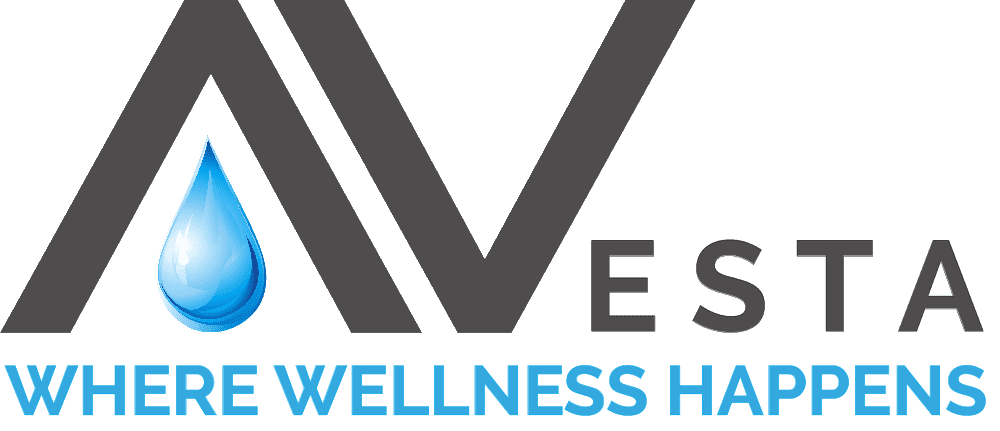In this Post
- Anxiety and the Amygdala
- Anxiety Disorder Stats
- Co-occurrence of Anxiety and Depression
- Ketamine for Anxiety
- Patient Interview
Anxiety and the Amygdala
A part of the brain called the amygdala controls our body’s response to stress and threatening stimuli (1). Within the amygdala, there are receptors that tell us to fight or take flight when there is danger in front of us. When the fight or flight response is triggered, we get a “surge of adrenaline… heart rate and blood pressure increase…and senses become hyper-alert”(2).
All humans experience this anxiety; however, individuals with anxiety disorders’ fight or flight response is triggered more frequently and by irrational perceptions of dangers. “Genetics, brain chemistry, personality, and life events” all play parts in the development of anxiety disorders (3).
- https://www.pnas.org/content/109/52/21180#:~:text=The%20amygdala%20is%20commonly%20thought,to%20threatening%20or%20dangerous%20stimuli.
- https://www.anxiety.org/fight-or-flight-fear-anxiety#:~:text=Fear%20responds%20to%20a%20real,sign%20of%20an%20anxiety%20disorder.
- https://adaa.org/understanding-anxiety/facts-statistics
Anxiety Disorder Stats
Anxiety disorders are common in the United States. They affect “40 million adults in the United States ages 18 and older, or 18.1% of the population every year” (3). Generalized anxiety disorder “affects 6.8 million adults, or 3.1% of the U.S. population, yet only 43.2% are receiving treatment” (3).
Co-occurrence of Anxiety and Depression
Anxiety and depression are often diagnosed together. The diagnoses fall on a spectrum, so a diagnosis of anxiety and depression does not necessarily mean a 50/50 split of the two mood disorders. For some individuals, depression leads to anxiety and for others, anxiety levels are much higher than depression.
There are hypotheses as to why the two disorders are comorbid. According to the National Alliance on Mental Illness (NAMI), “One theory is that the two conditions have similar biological mechanisms in the brain, so they are therefore more likely to “show up” together.” Anxiety and depression “have many overlapping symptoms, so people frequently meet the criteria for both diagnoses (an example of this might be the problems with sleep seen in both generalized anxiety and major depressive disorder)” (4). Another possibility is that “these conditions often present simultaneously when a person is triggered by an external stressor or stressors” (4).
Anxiety and depression overlap in many ways and it makes sense that the available treatments can alleviate symptoms from both diagnoses.
- https://www.nami.org/Blogs/NAMI-Blog/January-2018/The-Comorbidity-of-Anxiety-and-Depression

Ketamine for Anxiety
Ketamine reduces symptoms of both depression and anxiety through the same mechanisms. It does so by creating new connections in the glutamate system of the brain. One National Institutes of Health (NIH) study about the effects of ketamine on Social Anxiety Disorder (SAD) proved that it can provide effective relief for people with anxiety disorders. The study examined evidence that “glutamate/creatinine level was also positively correlated with severity of social anxiety symptoms” (5).
Ketamine also causes “dissociation,” which allows individuals with mood disorders to think about their problems differently. See our blog on dissociation to further understand it.
- https://www.ncbi.nlm.nih.gov/pmc/articles/PMC5729569/
Patient Interview
One of our loyal patients answered some questions to help guide others on what to expect.
- When did you start noticing a change in your anxiety levels during your induction phase?
“I noticed a significant lessening of anxiety after the second infusion, about 24 hours after the treatment. My anxiety was generalized, constant, and extremely disabling; I would say at baseline it was an 8/10, which was extremely disturbing. Conventional treatments like SSRIs, benzodiazepines (like Klonopin), were not helpful for me. After the second infusion I noticed a reduction in my baseline anxiety that was extremely relieving; I could breathe again. I was at about a 5-6/10, below the critical point where it was painful and disabling. I noticed a concurrent drop in depression and an increased interest in life. By the end of my 6-dose induction I felt like my anxiety had been nearly eliminated, with a baseline of 2-3/10 on most days and near 0/10 on some days. The results of Ketamine were profound after induction and clearly better than any other modality I have tried in decades.”
- Is there any part of your Ketamine experience that you think back at when you are experiencing anxiety?
“I haven’t had much retrospective thinking about the treatments and my anxiety. The reduction in anxiety came along with a marked reduction in thinking about anxiety in general, so there wasn’t much to motivate such retrospection. I did however utilize a lot of prospective thinking about the infusion, in the form of going into my treatments with the intention of “healing” my brain and growing new neural connections. I tried to think about the role anxiety played in my life, how I could calm or extinguish it, how I might relegate it to the background, during the infusions. When the ketamine was at peak levels (about mid-way through an infusion) I tried to have that “conversation” with myself and directly hold the intention to reduce anxiety and “let go” of my old patterns of brain activity. I’m not sure to what degree intention matters, but subjectively it felt like it helped a lot. Ketamine frees your imagination to a great degree – much of the hallucinogenic characteristics at low doses is not visual but imagination-based – and I tried to use that enhanced imagination to see new ways to interact with and relate to my anxiety.”
- Would you recommend Ketamine therapy to others with Generalized Anxiety Disorder?
“I would definitely recommend it to others, the results for me initially have been profound and light years beyond anything I’ve achieved with psychiatric medications. It’s not subtle, after the full induction phase my anxiety was ostensibly extinguished and I began living a brand new life free of the torment and burden of incessant anxiety. Throughout a lifetime of anxiety, using cognitive behavioral techniques, exercise, medications, therapy, sedatives, etc., I always felt like I was just barely affecting the root of the anxiety – a brain connectivity and chemistry that was hyperactive at baseline and unrelentingly on guard. Ketamine feels like the root issue, the brain itself, was being calmed and healed and so it was infinitely more effective than all those other approaches. The only caveat is that I’m not sure the effect is lasting and that might be a factor in whether it is a clear success or whether it is a transient relief. At about the 3-4 month mark, after undergoing a stressful pair of surgeries, my anxiety began to recur and at times seemingly return. I had a lot of concomitant stressors, so that has to be considered, but earlier in my treatment stressors washed off me like water off a duck. Now they are beginning to take a toll again. I am going to back up a few steps and do some more frequent ketamine treatments in the hope of getting back on track, but it is a reality check that the results may not be as lasting as I had hoped. Time will tell. I hope to get to where I can get treated around once every couple months, but maybe that’s not going to happen for me.”
4. Do you have any tips for others going through Ketamine treatments?
“Ketamine is a powerful but elegant medication, so it can be at once very calming and relaxing (like before you fall asleep with anesthesia) but also at times disconcerting in how powerful it gets (at the higher doses). At times it can seem almost too powerful, but it has never become frightening or a “bad trip.” There are very few visual distortions, i.e., no hallucinations, though sometimes the light through your eyelids can create shapes that look like things (similar to seeing an elephant in a cloud). No auditory hallucinations, though music is profoundly more beautiful than normal. The main distortion is time, which can feel constricted. That is, sometimes a 50-minute infusion can seem like it was only 10 minutes. And people entering or leaving the room can seem a bit sped up (but nothing crazy). The medication causes nystagmus, in which your eyes may dart from side to side, so it’s to be expected that if you open your eyes the room may jerk around a bit (and be generally foggy from sedation); don’t be alarmed and know that will stop after the infusion is over. There is a feeling of floating and separating from your body, dissociation, that is also at times powerful, but not frightening. You can always scratch the chair or briefly open your eyes to center yourself, but it’s not necessary and it does take away from the experience to interrupt it.
My biggest worry was that I would get freaked out and have an anxiety attack during the treatment when I was “incapacitated.” That ended up happening once and it was no big deal. I noticed the typical symptoms coming on – rapid heart rate, worry – but I was strangely calm about it. I couldn’t do much as I was pretty sedated so I just ignored it (something I couldn’t have done otherwise) and it passed very quickly. There is something very calming and reassuring to the medication, so I would not worry about having an anxiety attack. One other unique feature of ketamine is that it seems like you are (figuratively speaking) floating down a stream, such that thoughts or worries that you are having now will not be there in a minute or two as you “drift” toward the next thought. Each and every ketamine infusion is different; that is the only thing they have in common. Sometimes it’s all about feeling empathy and love for your family, other times it’s about healing my brain and coping with stress, other times it’s my imagination opening up and floating around in the universe.
My main recommendation is that you don’t fight it and relax and allow the experience to take you where your mind wants to go. There is no need to keep control, you never lose track of person, place, or time. You know who you are, where you are, and when you are, even if you feel floaty and dissociated from your body at times. It’s okay to touch the chair or open your eyes at times to “come down” if you feel the need, but I would try to limit doing so as it takes you out of the effect that is what is helping your brain to heal. Know that each and every time, no matter how powerful it feels at times, that you come down quickly and fully at the end. There’s no need to worry at all, it’s not scary like I worried it would be. Just relax and allow the medication to float you along through your imagination, maybe have some internal dialogue about what you want to accomplish – like reducing anxiety. I know that many people feel back to normal after 20 minutes, but for me I remain a bit groggy for the rest of the day, so be prepared to take the rest of the day off and be sure to have a ride home.
One last caveat. Don’t use benzodiazepine medications like valium, clonazepam, or Xanax before your ketamine treatment as it will negate most of the beneficial effects.”
Contact Us
To find out if you are a good candidate for ketamine therapy for anxiety, don’t hesitate to contact us for a free phone consultation with one of our clinicians. We look forward to working with you!

Coauthored, in alphabetical order by: Dr. Ladan Eshkevari, PhD, CRNA, FAAN, and Stephanie Gordon, BA
Author Stephanie Gordon Stephanie graduated from the University of Miami with a BA in public health and psychology in 2018. She has a passion for helping people and families through difficult times. As part of Avesta’s team, she strives to influence the healthcare system, facilitating access to treatments, like Ketamine therapy to become affordable, better understood, and incorporated as a holistic approach to mood and pain disorders. She fully believes in the combination of Ketamine infusions and cognitive therapy, and fits well with Avesta’s mission in helping people with mood disorders optimize their health, and wellbeing, and live their best lives!


